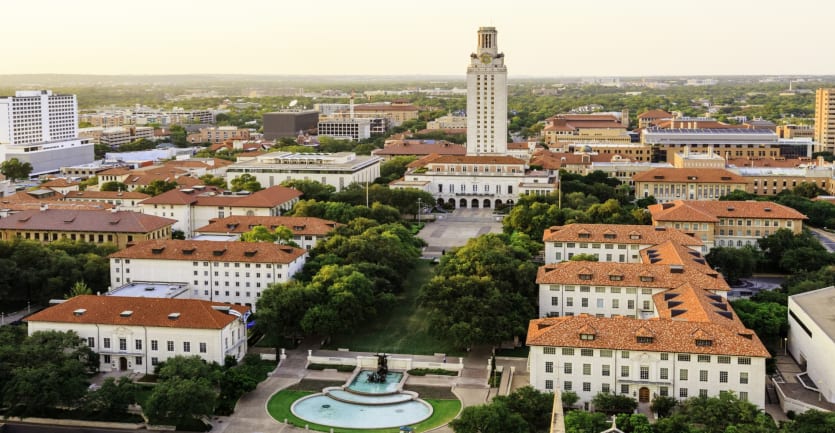Should Endowments Influence Your College Decision?
- Some colleges have amassed incredible wealth through endowments established by donors.
- Endowments benefit students and faculty in many ways, largely through scholarship aid.
- Given donor restrictions, endowments cannot fund budget shortfalls in times of crisis.
- Students’ college decisions shouldn’t be based on endowment size alone.
Students and their parents use countless methods to compare potential colleges. One criterion sometimes taken into consideration is a school’s endowment. We tend to equate wealth with quality, but does the size of an institution’s endowment mean anything for students, and should it matter when choosing a college?
Before we dive into such a discussion, let’s look at the largest university endowments. While these numbers change based on numerous factors — most notably the stock market’s health — the relative rankings remain roughly the same each year. Here’s a recent rundown of the top 10 U.S. colleges by endowment size:
- Harvard University: $38.3 billion
- University of Texas System: $30.8 billion
- Yale University: $29.3 billion
- Stanford University: $26.4 billion
- Princeton University: $25.9 billion
- MIT: $16.5 billion
- University of Pennsylvania: $13.7 billion
- Texas A&M University System: $13.5 billion
- University of Michigan: $11.9 billion
- Northwestern University: $11.1 billion
Another way to consider universities’ wealth is endowment per student, a metric that highlights smaller colleges with significant endowments. Here are the top 10 institutions with the highest endowment per student:
- Princeton University: $2.86 million
- Soka University of America: $2.79 million
- Yale University: $1.86 million
- Stanford University : $1.56 million
- Harvard University: $1.55 million
- MIT: $1.43 million
- Pomona College: $1.34 million
- Swarthmore College: $1.30 million
- Caltech: $1.30 million
- Amherst College: $1.23 million
Immediately striking is the vast wealth held by these institutions — their endowments exceed the gross domestic products of many small countries. Yet American higher education is almost as economically stratified as the general population. Some 11% of universities hold approximately 75% of the $500 billion in total endowment dollars in the U.S. Most institutions have only small endowments or none at all.

What Is a College Endowment?
When donors contribute money to a university, they have two main options: (1) make the gift expendable, which means that the money can be spent right away, or (2) create an endowment.
Think of a university endowment as a savings or retirement account. The principal, or corpus, generates interest that must be spent according to the donor’s wishes. That principal remains untouched in perpetuity, meaning forever.
As an example, say a donor establishes a $100,000 endowment. Using a 5% spending rate (college rates typically range from 4-6%), the endowment will pay out $5,000 that must be used according to the donor’s wishes — as a scholarship, for instance.
Colleges invest these endowed funds, generating returns that often exceed the 5% expenditure. Excess funds are added to the corpus so it continues to grow over time and keep pace with inflation; otherwise, that $100,000 endowment will have far less impact on future generations.
Think of a university endowment as a savings or retirement account. The principal, or corpus, generates interest that must be spent according to the donor’s wishes.
Instead of establishing an endowment, the donor could choose to make the gift expendable. Let’s assume they create a scholarship in their mother’s honor and name it the Elizabeth Miller Memorial Scholarship for students studying nursing.
The donor thinks it’ll be more immediately impactful to award $20,000 per year to one or more deserving students than to award the roughly $5,000 annually an endowment would generate. But in that scenario, the corpus would be depleted in just five years. By contrast, an endowment would live on forever and uphold the memory of Elizabeth Miller and the Miller family’s generosity.
Universities can also have quasi endowments, which function as regular endowments while giving the institution the option to spend the corpus at some point.
The takeaway here is that universities don’t have a single endowment but rather thousands of endowments established by donors with specific aims in mind. These funds are restricted for purposes such as scholarship aid, faculty and academic programs, and athletics. Some endowments are unrestricted, meaning the institution has full discretion over expenditures, but these constitute a small fraction of the overall endowment total.
Harvard: An Extreme Case Study in University Endowments
Endowments trace their history as far back as 176 A.D., when the Roman emperor Marcus Aurelius established the first recorded endowed professorship in Athens. In the U.S., endowments began with Harvard College, the country’s oldest institution of higher education. Over the course of its nearly 400 years, Harvard has amassed the world’s largest academic endowment, at times cresting $40 billion.
Over the course of its nearly 400 years, Harvard has amassed the world’s largest academic endowment.
Today, Harvard’s endowment — about $38 billion — consists of more than 13,000 funds. The vast majority of these funds are restricted for purposes such as professorships, undergraduate financial aid, graduate student fellowships, and student life and activities. Unrestricted funds account for less than 20% of the total.
Income from Harvard’s endowment covers roughly 35% of the university’s operating budget, which proved problematic during the Great Recession of 2007-09, when the Ivy League school lost 27% of its endowment value almost overnight and abruptly found itself scrambling to cover expenses normally funded by endowment income.
In 2019, Harvard distributed $1.9 billion from its endowment, an amount that exceeds the endowment total of all but 55 U.S. colleges and universities.
How College Students Benefit From Endowments
Endowments can fund practically anything a university spends money on. Most commonly, endowments fund the following:
Student aid
Faculty support
Academic programs
Student life initiatives
Research
Centers and institutes
Facilities
Technology
Athletics
Speaker series and related co-curricular activities
A popular way to support faculty and academic programs is through endowed chairs, which are endowments that generate funds to augment faculty salaries, provide stipends to graduate assistants, underwrite research projects, and enable professors to travel to conferences to present papers. Holding an endowed chair is an exceptional honor, and such a position attracts eminently qualified faculty who, in turn, enrich the academic enterprise in countless ways.
Recent data reveals that nearly half (49%) of all college endowment spending funds student financial aid. Another 16% underwrites academic tutoring and related student support programs. When it comes to donor preferences, clearly access for undergraduates with financial need and student success outcomes rank at the top.
A handful of colleges are need-blind, meaning they don’t consider a family’s finances when making admission decisions. In other words, a candidate won’t be any less attractive if they require financial aid to attend.
Recent data reveals that nearly half (49%) of all college endowment spending funds student financial aid. Another 16% underwrites academic tutoring and related student support programs.
Whether this theory works in practice remains debatable, but rest assured that an institution’s ability to operate under such a program requires a strong endowment that funds student aid. It’s hardly surprising, then, that universities with the largest endowments are the ones most likely to offer need-blind admission.
An even smaller number of wealthy institutions offer no-loan packages for accepted students requiring aid. These packages replace student loans with scholarships, grants, and work-study opportunities, thereby reducing the debt students and families face after graduation.
In most cases, the funding that enables colleges to offer free aid instead of loans comes from endowments. Budget strains and endowment losses, especially during and following the Great Recession, have caused some institutions to abandon no-loan practices.
Endowment Spending During the COVID-19 Pandemic
The coronavirus pandemic has ravaged higher education, straining budgets that rely on tuition dollars along with room-and-board revenue. Likewise, students and families are facing hardships because of lost employment and struggling to make ends meet, let alone finance college.
In response, can’t universities tap into their vast endowment resources to patch budget deficits, reduce layoffs, and help students through this crisis?
Unfortunately, it’s not that simple. As we’ve seen, endowments are highly restricted. Colleges must spend these funds according to donors’ wishes. An endowment for botany research can’t begin funding student aid just because that’s what’s needed most at the time.
In response to COVID-19, colleges are temporarily raising spending rates to provide more resources.
Colleges are, however, temporarily raising spending rates to provide more resources. Spending rates are determined by each school and can be increased or decreased depending on circumstances. Last year, the average spending rate nationwide was 4.5%. Now, in the midst of the COVID-19 crisis, two-thirds of universities have increased their endowment spending by a median of 6.6%, according to U.S. News & World Report.
Some colleges are also asking donors to suspend restrictions on endowments so that more funds can become available for emergency purposes. In extreme cases in which an institution might face bankruptcy or closure, a court can issue a doctrine of cy-pres, which allows the college to use the endowment for survival.
Emergency responses, such as spending rate increases, must remain temporary to ensure the long-term health of the endowment and the college’s financial well-being.
“When an institution takes its endowment money and spends it to plug holes in the budget, it is breaking promises to past donors and it’s stealing from the future,” said Stephen Greenhalgh, an attorney and former trustee of Albion College. “People are expecting that money to stay there and be a stable rock for the college forever.”

Endowments and Choosing a College to Attend
When researching colleges, should students factor endowment size into their decisions? In other words, does endowment size equate to educational quality and impact students in any meaningful way?
The answer is complicated. Research indicates a positive correlation between endowment size and educational spending at private institutions. Larger endowments lead to higher faculty salaries and more educational opportunities for students. Public institutions too have come to rely more on endowments and other sources of private income as state funding has decreased.
But the effects of endowment increases are minimal, and specific benefits vary among colleges depending on what endowments support. An endowed scholarship for anthropology students at one school might not exist at another. The same goes for specialized centers/institutes and research programs funded by endowments. What constitutes “benefits” may or may not benefit you.
In its popular college rankings, U.S. News & World Report calculates “financial resources per student” as 10% of an institution’s score — and these resources stem largely from endowments. Although these lists appear to be top-heavy with the wealthiest institutions, since 2008 reputational and endowment rankings have shown little correlation.
U.S. News & World Report calculates “financial resources per student” as 10% of an institution’s score — and these resources stem largely from endowments.
Indeed, college decisions based on endowment size seem spurious. If a student is considering top-ranked private universities, they’re not likely to have a meaningfully different educational experience at one or another based on the relative size of endowments.
A decision between a rich school and a poor one in terms of endowments may result in different opportunities, but that decision usually involves mitigating factors such as scholarships, location, family ties, and so forth.
Similarly, while that top private school might have more financial resources than the local state university, such advantages are tempered by lower tuition and fees and a steady stream of public funding.
The wisest course of action is to choose an institution that best fits your needs and will give you the clearest avenue for success, however you measure it. If that institution happens to have a large endowment, wonderful. If not, it doesn’t mean you can’t get a good education and prosper.
Feature Image: LUNAMARINA / iStock / Getty Images Plus
Explore More College Resources

Summer Semester: When Does It Start? And Should You Enroll?
School’s out — or, rather, in — for summer. Discover the pros and cons of enrolling in an optional summer semester in college.

by Anne Dennon
Updated March 20, 2023

